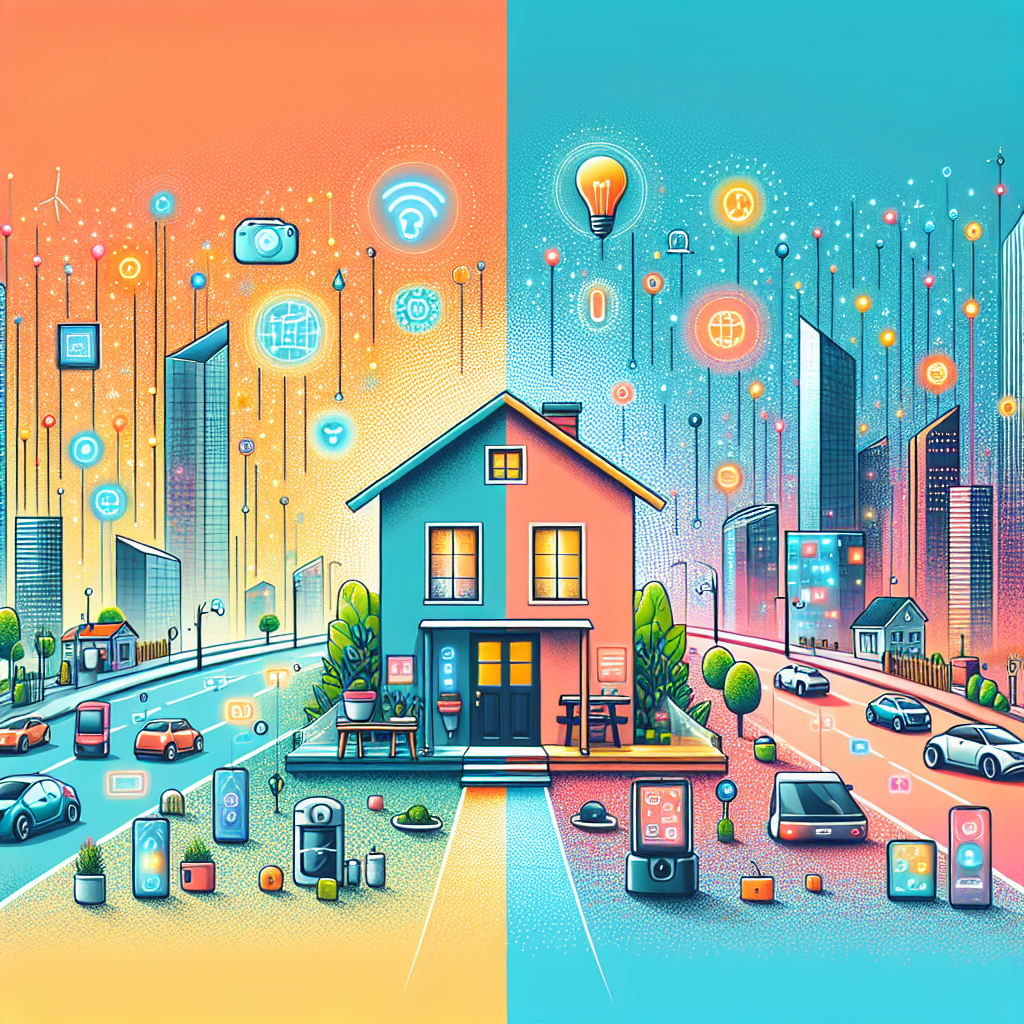
From Smart Homes to Smart Cities: How Technology is Transforming Urban Living
Technology is rapidly changing the way we live, work, and interact with our surroundings. From smart homes equipped with voice-activated assistants to entire cities utilizing data-driven solutions for efficient resource management, the impact of technology on urban living is profound. In this article, we will explore the evolution from smart homes to smart cities, examining the benefits, challenges, and future possibilities of this transformative trend.
The Rise of Smart Homes
Smart homes have become increasingly popular in recent years, offering homeowners convenience, security, and energy efficiency. From thermostats that learn your preferences to lighting systems that adjust based on natural light levels, smart home technologies are designed to make daily life easier and more streamlined. For example, smart locks can provide remote access control, allowing homeowners to grant entry to visitors even when they are not home.
Case Study: Amazon Alexa
One of the most well-known smart home devices is Amazon’s Alexa, a voice-activated virtual assistant. Alexa can control smart devices, play music, provide weather updates, and much more. Its seamless integration with various smart home systems has made it a popular choice among consumers looking to automate their homes.
Transition to Smart Cities
As smart home technology continues to advance, the concept of smart cities is gaining traction. Smart cities leverage data and technology to improve infrastructure, public services, and overall quality of life for residents. From traffic management systems that optimize traffic flow to waste management solutions that reduce environmental impact, smart cities are redefining urban living.
Example: Barcelona, Spain
Barcelona is a prime example of a city embracing smart technologies to enhance urban living. The city has implemented smart street lighting, sensor-equipped waste bins, and a digital platform for citizen engagement. These initiatives have not only improved efficiency but also increased sustainability and community involvement.
Challenges and Considerations
While the potential benefits of smart homes and smart cities are vast, there are also challenges to overcome. Issues such as data privacy, cybersecurity threats, and digital divide must be addressed to ensure that technology serves the best interests of all residents. Additionally, the cost of implementing smart technologies can be a barrier for some cities and homeowners.
Fact: By 2050, it is estimated that 68% of the global population will live in urban areas, highlighting the importance of sustainable urban development.
FAQs
Q: What are the key components of a smart home?
A: Smart homes typically include connected devices such as thermostats, lighting, security cameras, and entertainment systems that can be controlled remotely through a smartphone or voice commands.
Q: How can smart cities benefit residents?
A: Smart cities can improve transportation infrastructure, reduce energy consumption, enhance public safety, and provide better access to public services, ultimately enhancing quality of life for residents.
Conclusion
From smart homes to smart cities, technology is revolutionizing urban living in unprecedented ways. By leveraging data and connectivity, cities can become more sustainable, efficient, and livable for all residents. As we continue to embrace smart technologies, it is essential to prioritize privacy, security, and inclusivity to ensure that the benefits of technology are accessible to everyone.







